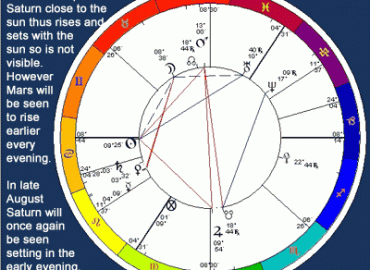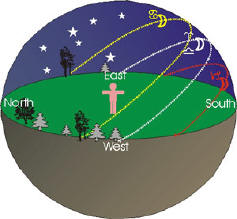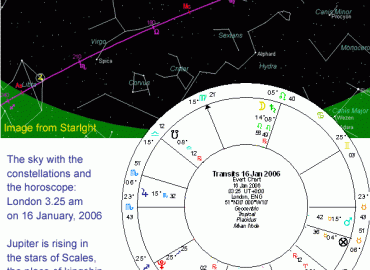Bernadette Brady
September 2005
The role of the Tupsar Enuma Anu Enlil (one of the early names and possibly the original name for an astrologer) was varied. They were not only astrologers (or diviners) but also meteorologists and economic advisors, as well as healers and holders of medical knowledge. Therefore the predicting of storms and/or floods was well within their job description and represents an overlap of meteorological as well as astrological knowledge.
The metrological and astrological approach was to observe the current celestial omens and then scan the records of the sky omens, the Enuma Anu Enlil, to look for previous occurrences of the celestial pattern which could be both planetary and/or atmospheric. They would then consider the recorded history linked to those omens. With this in hand the scholar either simply reported the reading from the Enuma Anu Enlil or endeavoured to build on the body of knowledge and add new insights to the possible manifestation of the observed celestial events. In this sense little has changed, as the modern astrologer some 4,000 years later still refers to earlier occurrences of planetary patterns to give insights into future events.
But where we differ from our ancient predecessors is that they would not only have attempted to predict a storm, they would also have used the storm as a celestial omen in its own right, so that that which is being predicted, upon its occurrence, becomes the source for further predictions. We have clear evidence of this in this example written around the period of 670 B.C.E. by the Assyrian priest Balasi who wrote:
“If a storm rises from the south: fall of the Westland.” (Hunger.1992:48)
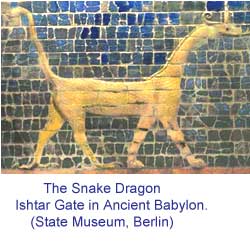
To the Assyrians the storm god was the god Tesup or Tispak, the great Snake Dragon, considered all- powerful and even linked to Marduk, the one that could bring the return of chaos with a simple thought. So the evidence of a great storm would have been considered a message from this Snake Dragon.
However, in our modern astrology we reduce our vision to just sky objects such as planets, asteroids, centaurs or stars and within this framework we look with varying success to different horoscopes to show us the signature of such a great storm. The horoscopes used will be many, as astrology is fractal- like, with the symbol of such an event showing up in almost any chart loosely linked to the storm, clear in retrospect but much harder to anticipate.
Yet in the face of such a great storm as Katrina and in an endeavour to see the world through Mesopotamian eyes, we can consider the great hurricane of Katrina as a celestial omen in itself and turn the tables on the modern astrological approach in that Katrina becomes the protasis, the sky omen itself, rather then the apodosis, the forecasted event. Granted we are stepping into uncharted waters within visual astrology by letting go of our heavenly bodies. However, with this acknowledged, let us consider the question that would have undoubtedly been asked of our Assyrian predecessors:
“What does such a great storm mean for the kingdom?”
Or phrased in a more modern manner :
“Does this event – the occurrence of the worst hurricane in US history – hold any portents for the US or world events to come?”
Now the most junior of Assyrian sky watchers would have noted a strong and obvious pattern: the two largest recorded hurricanes to strike the USA have been Hugo (landfall 21 September 1989) and now Katrina (landfall 29 August 2005) and both have interesting parallels.
At the time of Hugo the president in power was George Bush. It is reported that after hurricane Hugo, George Bush had to send in military troops in order to stop the looting and lawlessness which was unfolding in South Carolina. The Assyrian scholars would have also noted that within a year of Hurricane Hugo, Bush had taken the kingdom to an what is now considered an unsuccessful war. This was, of course, the Gulf War (2 August, 1990) which Bush uncannily named Desert Storm.
Now, some sixteen years later, the great storm of Hugo has been superseded by hurricane Katrina and Bush’s son is in the White House. Like his father, George W. Bush’s first action was to send in troops to restore law and order in the face of large scale crime and looting. Now he is sending in troops to give aid. He is also, once again, involved in a war in the Gulf.
Building on this theme, if we take one step back from the two Bush’s and the two greatest storms to hit the USA and looking for the biggest hurricane before Hugo and Katrina, we come to hurricane Hazel, 5th -16th October, 1954. At that time Eisenhower was in power and what followed that great storm was the nuclear arms race of 1955. The USA tested nuclear devices in Nevada as well as the Pacific in May, 1955 and the USSR tested nuclear weapons in July and August, 1955. There was so much fear of nuclear attack that the US Congress issued the law that all US bank notes and coins carry the accountability-denying slogan “In God We Trust”, a message they still carry.
This fear of nuclear attack continues but now focused on Iran rather then USSR.
So what would the Assyrian priest reply be to the question of Katrina? Probably they would suggest to the king to step back from military activity as it would be non-productive but more importantly, such a potent sky omen would indicate defeat of the king’s army. Unfortunately although the Assyrian king would probably have taken note of his scholars, one doubts that George W. Bush will do the same.
But we do not need to enter into total weather omens. We can possibly see this storm god in our starry sky, for the constellation Leo stands on the back of the constellation of the Hydra and this particular sky combination was recorded, observed and even drawn by Assyrian scholars. We do not have evidence that the Assyrians saw these two constellations as the Snake Dragon but one can argue that, since the Lion and the Snake always rise together, this is a feasible assumption. (See images below of the Lion and The Snake rising together.)
If we accept this argument, then we can also note that, for all three hurricanes this Snake Dragon was rising with the sun.
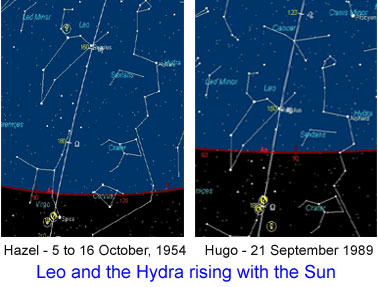
Now we can dismiss all of this by acknowledging the fact that Leo and the Hydra rise before the sun every year at the same time, which meteorologist will quickly point out is the hurricane season. Every year hurricanes occur from 1st June till mid October, with the worst hurricanes occurring in the latter part of the season.
So which came first, the hurricane season or the Snake Dragon rising with the sun?
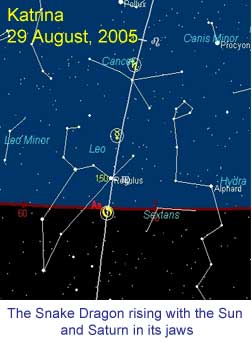
And within this thinking could one argue that, since the Snake Dragon rises later in the calendar from one year to the next (due to precession), that it is the Snake Dragon which is slowly dragging the hurricane season later into the Autumn or Fall? Maybe in 4,000 years from now, in 6,000 C.E. the hurricane season will be around November and December.
But for the last few thousands years, this is also the time when the sun travels amongst the stars of the (possible) Snake Dragon.
Either way the Assyrian scholars would point out that this does not augur well for the next twelve months in the USA and consequently the rest of the world.
Sources:
Hunger, Herman. (1992). Astrological Reports to Assyrian Kings. Helsinki, Finland: Helsinki University Press.
Black, Jeremy and Green, Anthony.(1998). Gods, Demons and Symbols of Ancient Mesopotamia. London. The British Museum Press.


